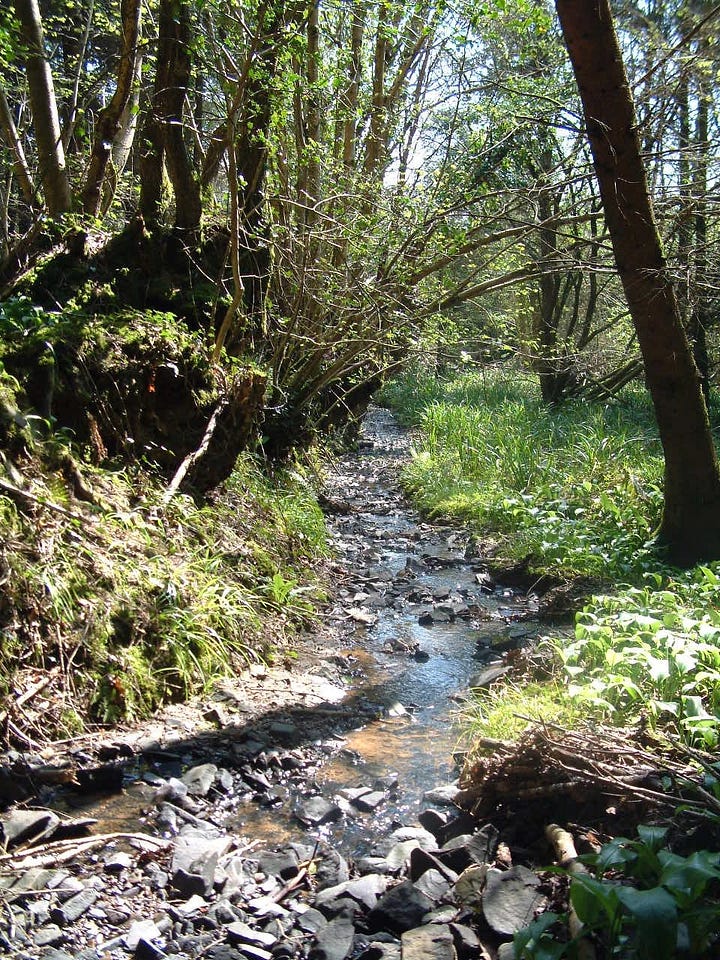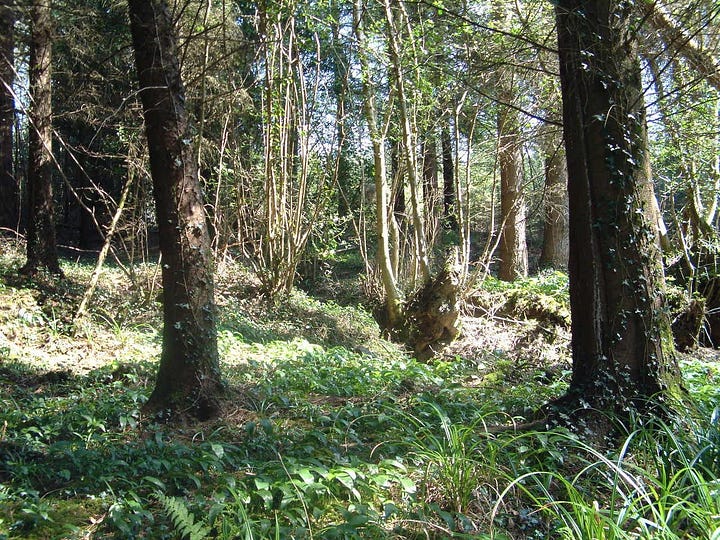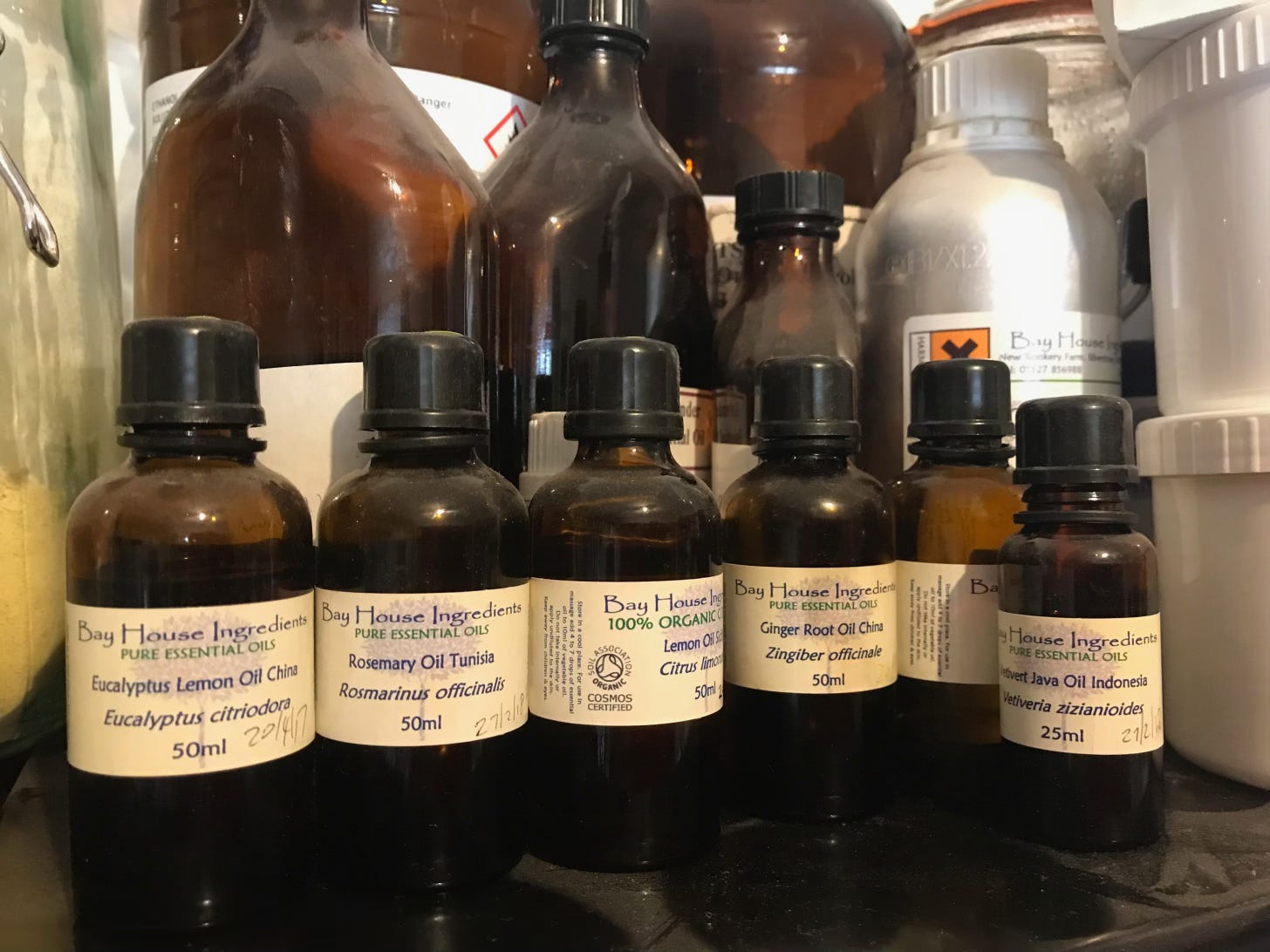MAKING RECIPES #5 Creating an insect repellent
On aromatic plants as insect deterrents and recipe suggestions for herbal remedies to ward off flying biting things
Away with bugs in the woods! Devising an insect repellent recipe is possible if you know a little about some key plant constituents, and here are some suggestions for using aromatic essential oils as a spray and making a juniper balm to ward off insects. This post is #5 in the MAKING RECIPES # series about my inside story on growing, harvesting, making, marketing, preserving, creating healing remedies and selling body care products, many from the medicinal forest garden. If you have subscribed on a paid basis to read this MAKING RECIPES # series then I really appreciate your support!
I suspect I have always been a target for flying insects. One step outdoors and I think I can see them heading for me. Some are tiny whirring creatures like midges that hang around the head, others are large and lazy horse flies that lurk silently around the arms and legs. Many plants are brilliant at defending themselves from bugs, producing a stream of aromatic compounds and other barriers such as a waxy surface to put off biters and nibblers. However, there are many insects that prefer to find a meal of flesh and blood, and that is me! As I understand it, these insects have an incredible set of olfactory receptors in their antennae that lock on to key molecules - especially the carbon dioxide that we breathe out and lactic acid in sweat - plus they can detect other clues like warmth. So, to be effective an insect repellent has to disguise these smells and thus deter the insects from locating us.
As the weather warms up, you may see me walking about frantically waving a branch of foliage around. Indeed, this may not be as strange a behaviour as it sounds because moving air is also quite a good defence against noxious insects, as they simply have to struggle more to stay around.




But it is not always possible to stand about and wave branches around if you are working outdoors. And as the warm weather entices us for longer outside, so I have an increased personal interest in insect repellents. I really need them to work for me and I have tried quite a few in the past, from shop-bought sprays to homemade remedies. Looking in my recipe notebooks I can see that I started seriously thinking about possibilities for plant-based insect repellents in May 2005. Perhaps it is not a coincidence that this was the year when we were clearing ground and planting trees at Holt Wood in Devon for our medicinal tree and shrub project. As the spruce trees came down to make way for fresh planting we were creating a lot of disturbance. Nearby grass and other ground plants plus a stream provided a great habitat for midges and others.
So, I started to look for plants that could help provide natural insect repellents. These offer alternatives to synthetic chemical deterrents like diethyltoluamide (DEET) and noxious insecticides like neo-nicotinoids. Of course, if you want to absolutely stop flying insects (and also ticks), you need to look at a range of measures such as physical blocking (long sleeves, socks over trousers, mesh, nets, closed doors) and avoidance (avoid still and moist places, stay indoors). In the case of malaria and other life-threatening diseases spread by mosquitoes I would take every precaution possible, and I don't recommend relying on plant deterrents alone.
But back to the woods. After some research, back in 2005, I decided to make a mixture of essential oils in a spray form. Understanding more about how insect repellents might work is useful in thinking about natural plant preparations. The insect deterrent effects are usually strongest with aromatic plants which mask the scents of human skin and respiration. BUT be warned that there are no guarantees about plant-based insect repellents, mostly because they tend to be more volatile. So, the effects can substantially decrease within 1-2 hours, which means frequent application is essential. Since plant essential oils are too strong to apply neat to the skin they need to be dissolved in alcohol and diluted.
Recipe for insect repellent spray
250 ml spirit (gin or vodka) with 40% alcohol
30 drops citronella essential oil
10 drops thyme essential oil
10 drops peppermint essential oil
20 drops lavender essential oil
Add the essential oils to the spirit and mix well. Bottle in containers with spray tops and shake well before use. Spray on clothes and areas vulnerable to insects such as ankles and wrists. Do not spray near the eyes. Not advised for use with children.
You can adapt the recipe with other essential oils but still aim for about 2% level of essential oils or around 20-40 drops per 100 ml. Although this spray is low in essential oils, the alcohol can be drying to the skin with repeat applications. One way to lengthen the period of effectiveness close to the skin could be to mix the spray into a gel (such as aloe vera gel) or a balm.
I wanted to make something that was less drying and perhaps less volatile, and more skin friendly, so I started to look at making an insect repellent balm…
Keep reading with a 7-day free trial
Subscribe to Medicinal Tree Woman to keep reading this post and get 7 days of free access to the full post archives.







